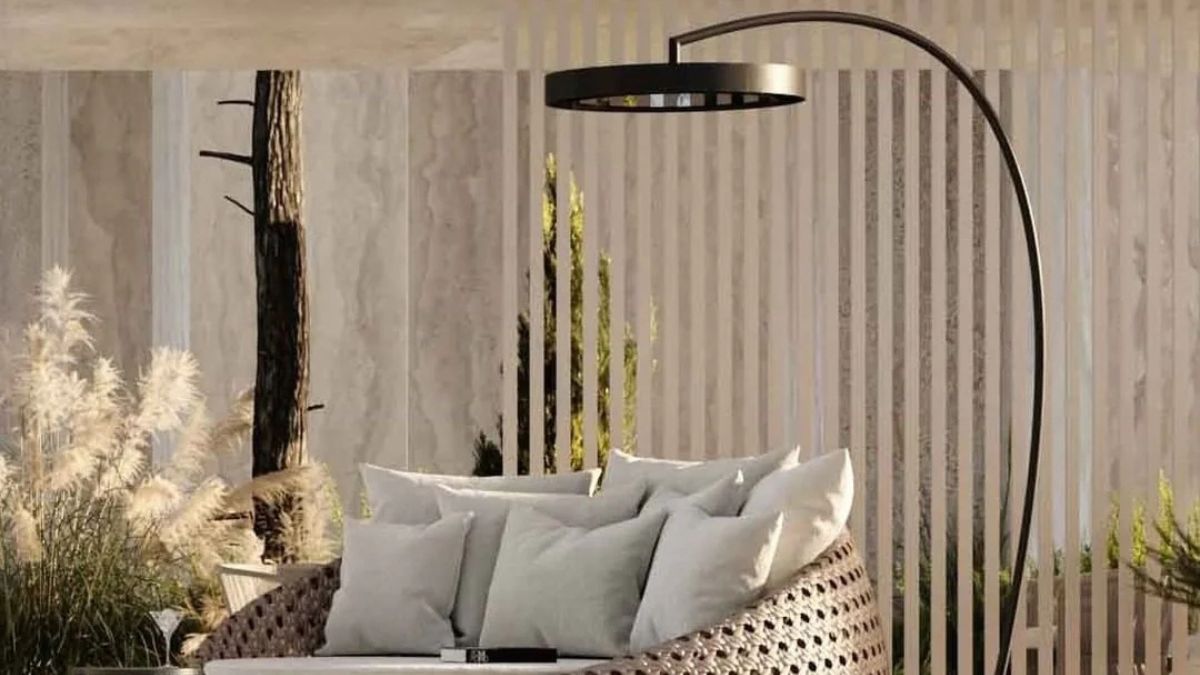LIFESTYLE
The Ultimate Guide to Congo Tetra Care

Introduction to Congo Tetra Care
The Congo Tetra care (Phenacogrammus interruptus) is a vibrant and captivating fish native to the slow-moving waters of the Congo River Basin in Central Africa. Known for their iridescent scales and flowing fins, Congo Tetra care are a popular choice among aquarium enthusiasts and beginner fish keepers alike. Their peaceful nature and striking appearance make them an excellent addition to any freshwater community tank.
Why Choose Congo Tetra care?
- Appearance: Their shimmering, rainbow-colored scales and long, flowing fins set them apart from other tetras.
- Behavior: Congo Tetra care are schooling fish that exhibit fascinating social behaviors when kept in groups.
- Compatibility: They are generally peaceful and get along well with other non-aggressive species.
Setting Up the Ideal Tank
Tank Size and Dimensions
Congo Tetra care thrive best in spacious aquariums. A minimum tank size of 30 gallons is recommended for a small school of six to eight fish. Larger tanks are always preferable, as they provide ample swimming space and help maintain water quality.
Water Parameters
Maintaining optimal water conditions is essential for the well-being of Congo Tetra care. The ideal temperature range is 73°F to 82°F (23°C to 28°C), with a pH level between 6.0 and 7.5. Soft to moderately hard water, with a hardness of 3 to 18 dGH, mimics their natural habitat.
Filtration and Aeration
Invest in a high-quality filtration system that provides both mechanical and biological filtration to keep the water clean and well-oxygenated. A gentle flow mimicking the slow-moving waters of the Congo River is ideal. Additionally, ensure adequate aeration to maintain sufficient oxygen levels within the tank.
Substrate and Decorations
A dark-colored, sandy substrate not only enhances the vibrant colors of Congo Tetra care but also replicates their native environment. Incorporate plenty of plants, driftwood, and smooth rocks to create hiding spots and establish territories. Floating plants can help diffuse light, making the tank feel more natural and secure for the fish.
Lighting
Congo Tetra care do not require intense lighting. Moderate lighting that simulates the dappled light of their natural habitat is ideal. LED lights with adjustable settings allow you to fine-tune the brightness to suit both the fish and the plants within the tank.
Tank Companions
When choosing tank mates for Congo Tetra care, opt for other peaceful, community-friendly species. Avoid aggressive or fin-nipping fish, as Congo Tetras have delicate fins and can be easily stressed. Ideal companions include other tetras, rasboras, small catfish, and dwarf cichlids.
Feeding and Nutrition
Proper nutrition is vital for the health and vibrancy of your Congo Tetra care. They are omnivores and require a balanced diet to thrive.
Types of Food
Congo Tetras appreciate a variety of foods to meet their dietary needs:
- Flakes and Pellets: High-quality flake or pellet food formulated for tropical fish provides a good staple diet.
- Live and Frozen Foods: Treat them with live or frozen foods like brine shrimp, daphnia, and bloodworms to enhance their coloration and promote natural hunting behaviors.
- Vegetable Matter: Incorporate plant-based foods like spirulina flakes or blanched vegetables, such as spinach or zucchini, to ensure a well-rounded diet.
Feeding Schedule
Consistency is key when it comes to feeding your Congo Tetras:
- Frequency: Feed small amounts two to three times a day. This prevents overfeeding and maintains water quality.
- Portion Size: Only provide what they can consume within 2-3 minutes to avoid excess leftovers that can pollute the tank.
Supplementation
Occasionally supplementing their diet can help boost their immune system and overall health:
- Vitamins and Minerals: Consider liquid vitamin supplements that can be added to their food or water periodically.
- Treats: Offer treats like freeze-dried foods sparingly to provide variety and additional nutrition.
Observing Eating Habits
Regularly monitoring your Congo Tetras during feeding time is crucial:
- Healthy Appetite: An active and eager attitude toward food is a good indicator of health.
- Behavioral Changes: A lack of interest in food might signal stress, illness, or poor water quality, requiring immediate attention.
By maintaining a diverse and balanced diet, your Congo Tetras will remain healthy, vibrant, and active, adding beauty and vitality to your aquarium.
Health and Care
Maintaining the health of your Congo Tetra care requires consistent care and attention. Understanding common health issues and taking preventive measures can help ensure that your fish lead a long and healthy life.
Common Health Issues
Congo Tetra care, like many aquarium fish, can be prone to certain diseases and health problems:
- Ich: This parasitic disease manifests as white spots on the fish’s body and fins. It can be treated with over-the-counter medications and by raising the tank temperature gradually.
- Fin Rot: Often caused by poor water conditions, fin rot results in the deterioration of the fins. Improving water quality and using antibacterial treatments can help reverse the condition.
- Swim Bladder Disorder: This can cause erratic swimming behavior. Ensure a balanced diet and avoid overfeeding to prevent this issue.
Disease Prevention
Prevention is the best strategy for keeping your Congo Tetra care healthy:
- Water Quality: Regularly test water parameters and perform partial water changes of 20-30% weekly to maintain optimal conditions.
- Quarantine New Fish: Isolate new fish in a separate tank for a few weeks before introducing them to your main aquarium to prevent the spread of diseases.
- Clean Environment: Remove uneaten food and debris, and clean tank decorations regularly to prevent the buildup of harmful bacteria.
Signs of a Healthy Congo Tetra care
Recognizing the signs of a healthy tetra can help you monitor their well-being:
- Active Swimming: Healthy Congo Tetra care should be active and swimming freely around the tank.
- Appetite: A good appetite is a strong indicator of health. Healthy fish should eagerly come to the surface during feeding times.
- Bright Colors: Vibrant, iridescent scales and well-formed fins are signs of good health.
When to Consult a Vet
If you observe any unusual behavior, loss of appetite, or visible signs of illness that do not improve with standard treatments, it is crucial to consult an aquatic veterinarian. Early intervention can often prevent minor issues from becoming serious health problems.
Breeding Congo Tetra care
Breeding Congo Tetra care can be a rewarding experience for fish keepers. This process requires a specific setup and attention to detail to ensure the best chance for success.
Preparing the Breeding Tank
To encourage breeding, it’s ideal to set up a dedicated breeding tank separate from the main community tank.
- Tank Size: A 20-gallon tank is sufficient for a breeding pair.
- Substrate: Use a dark-colored substrate or marbles to protect the eggs from being eaten.
- Plants and Hiding Spots: Provide plenty of live plants, such as Java moss or spawning mops, to give the fish a place to lay eggs and to provide cover for the fry.
Water Conditions for Breeding
Maintaining the right water conditions is vital to encourage spawning.
- Temperature: Raise the temperature to around 78-80°F (25-27°C) to stimulate breeding behavior.
- pH Level: Aim for a slightly acidic pH around 6.0-6.5.
- Soft Water: Use softer water to mimic the natural environment of Congo Tetras, with a hardness of 1-5 dGH.
Breeding Behavior
Understanding the breeding behavior of Congo Tetra care will help in recognizing when they are ready to spawn.
- Courtship: Males will display enhanced coloring and engage in vibrant displays to attract females.
- Spawning: The female will scatter her eggs among the plants and substrate, and the male will follow to fertilize them.
Raising the Fry
Once the eggs are laid and fertilized, it’s crucial to care for the fry properly.
- Egg Incubation: Remove the parents from the breeding tank to prevent them from eating the eggs. The eggs will hatch in about 6-7 days.
- Feeding Fry: Initially feed the fry with infusoria or liquid fry food. As they grow, introduce baby brine shrimp and finely crushed flake food.
- Water Quality: Maintain pristine water conditions with frequent small water changes to ensure the health and growth of the fry.
Breeding Congo Tetras can be challenging but also incredibly fulfilling. By following these guidelines, you increase the chances of successfully raising a new generation of these stunning fish.
Conclusion
Congo Tetra care are a beautiful and fascinating species that can bring joy and vibrancy to any aquarium. By understanding their needs and providing proper care, you can ensure that these stunning fish thrive in your tank. Remember to maintain ideal water conditions, offer a balanced diet, and keep an eye on their health to enjoy the full beauty and personality of your Congo Tetras.
More: holly burrell: Know the Life and Career of Ty Burrell
FAQs
How many Congo Tetra care should I keep together?
Congo Tetras are schooling fish and thrive in groups. It is recommended to keep at least six of them together to encourage natural behavior and reduce stress.
What is the ideal tank size for Congo Tetras?
A minimum tank size of 30 gallons is recommended for a small school of Congo Tetras. Larger tanks are better as they provide more swimming space and help maintain stable water conditions.
How often should I feed my Congo Tetra care?
Feed your Congo Tetra care small amounts of food two to three times a day. Provide only as much food as they can consume within a few minutes to avoid overfeeding and water quality issues.
Can Congo Tetras coexist with other fish?
Yes, Congo Tetras are generally peaceful and can coexist with other similarly sized, non-aggressive fish. Suitable tankmates include other tetras, rainbowfish, and peaceful catfish species.
How do I know if my Congo Tetras are healthy?
Healthy Congo Tetras will display vibrant colors, active swimming behavior, and a good appetite. Regularly monitor your fish for signs of illness, such as white spots, fin damage, or abnormal swimming patterns.
What should I do if my Congo Tetra is sick?
If you notice signs of illness, isolate the affected fish in a quarantine tank and consult an aquatic veterinarian for appropriate treatment. This helps prevent the spread of disease to other fish in your main tank.
How can I improve water quality in my tank?
Regularly test the water parameters and perform partial water changes of 20-30% weekly. Use a quality water conditioner, maintain your filter, and remove any uneaten food or debris to keep the tank clean.
LIFESTYLE
The Art of Light: Creating Ambiance with Visual Comfort Home Lighting

Imagine stepping into your home and feeling an instant wave of comfort wash over you. The soft glow from carefully selected light fixtures creates a warm embrace, inviting you to unwind after a long day. This is the magic of visual comfort lighting—a thoughtful approach that transforms any space into a sanctuary.
Lighting isn’t just about visibility; it’s essential for setting the mood and enhancing your interior design. It shapes how we perceive our surroundings, influencing our emotions and even our well-being. In this blog post, we’ll explore how to master the art of ambiance through visual comfort lighting, ensuring every corner of your home radiates warmth and style. Get ready to illuminate your living spaces in ways you never thought possible!
Understanding the Importance of Lighting in Home Design
Lighting plays a crucial role in home design, influencing both mood and functionality. It transforms spaces, highlighting architectural features while creating an inviting atmosphere.
Natural light can enhance the perception of space and promote well-being. Strategically placed windows or skylights bring warmth and vitality into your home.
Artificial lighting complements this by providing practicality after dark. The right fixtures ensure that every corner is illuminated effectively without harshness.
Different rooms require different types of lighting for their unique purposes. A cozy living room demands soft, ambient lights, while a kitchen needs bright task lighting to facilitate cooking.
Understanding how to balance these elements is key to achieving visual comfort in your home. With thoughtful planning, you can create environments that inspire relaxation and productivity alike.
The Different Types of Lighting and Their Functions
Lighting is more than just illumination; it plays a vital role in setting the mood of your home. Understanding the different types of lighting can enhance any space.
Ambient lighting offers general illumination, filling a room with soft, even light. It’s perfect for creating a welcoming atmosphere. Think ceiling fixtures or recessed lights that brighten up an entire area without harsh shadows.
Task lighting focuses on specific activities like reading or cooking. Desk lamps and under-cabinet lights provide focused beams to help you see clearly while working.
Accent lighting draws attention to particular features such as artwork or architectural details. Wall sconces and spotlights can highlight these elements beautifully.
Layering these types creates depth and interest in your design, allowing for flexibility in ambiance throughout your home. The thoughtful combination ensures each space feels balanced and functional, catering to both aesthetic appeal and practical needs.
Choosing the Right Light Fixtures for Your Space
Selecting the right light fixtures is crucial for enhancing your living space. Start by considering the purpose of each room. Task lighting, ambient lighting, and accent lighting all play important roles.
Next, think about style. A sleek pendant might suit a modern kitchen, while a vintage chandelier could elevate a dining area’s charm. Your choice should reflect your personal taste.
Scale matters too. Oversized fixtures can create drama in spacious rooms but may overwhelm smaller spaces. Always measure to ensure balance.
Don’t forget color temperatures! Warm tones foster coziness, making them ideal for intimate settings. Cooler lights can energize workspaces or function well in kitchens.
Consider energy efficiency when selecting bulbs and fixtures. LED options not only save on electricity bills but also come in various styles to fit any decor theme.
Tips for Creating Ambiance with Lighting
Creating ambiance with lighting involves a thoughtful approach to how you illuminate your space. Start by layering different light sources. Combine ambient, task, and accent lighting for depth.
Dimming switches are your best friend. They allow you to adjust brightness based on the time of day or mood. A soft glow can transform a bustling kitchen into a cozy gathering spot.
Consider color temperature as well. Warm white lights create an inviting atmosphere, perfect for living areas and bedrooms, while cooler tones work well in functional spaces like offices or kitchens.
Don’t forget about decorative fixtures. Chandeliers or unique lamps serve not only as light sources but also as focal points that enhance your decor style.
Be mindful of shadows and reflections. Position lights strategically to avoid harsh glares and create gentle warmth throughout the room.
Incorporating Visual Comfort Home Lighting into Your Interior Design
Incorporating Visual Comfort lighting into your interior design can transform any space. Start by considering the mood you want to create. Soft, warm tones can evoke coziness, while brighter lights enhance productivity.
Layering is key. Mix ambient, task, and accent lighting for a balanced look. Use pendant lights over dining tables for elegance or strategically placed floor lamps in reading nooks to invite relaxation.
Don’t shy away from statement fixtures. A bold chandelier can serve as a focal point in your living room, drawing attention and sparking conversation.
Think about the functionality of each area too. Adjustable dimmers allow flexibility; they let you change ambiance based on time of day or activity.
Remember that light interacts with colors and textures around it. Test how different bulbs affect wall paint and furniture finishes before making final decisions on your fixtures.
Conclusion: Elevate Your Home’s Aesthetics with Visual Comfort
Creating a harmonious environment in your home is an art. Visual Comfort lighting plays a significant role in enhancing both aesthetics and functionality. By understanding the various types of lighting and their purposes, you can select fixtures that not only illuminate but also elevate your space.
The right lighting transforms rooms, creating warmth and inviting atmospheres. It allows you to highlight architectural features or artwork while providing essential task illumination. With thoughtful placement and appropriate choices, each room can tell its own story through light.
Experiment with different fixtures—pendants, sconces, or floor lamps—to discover what resonates best with your style. Incorporating layers of light will add depth and dimension to any area within your home.
As you explore visual comfort in lighting design, remember that it’s about finding balance; balancing brightness with softness creates tranquility. Play around with colors too—warm tones evoke coziness while cooler shades bring calmness.
Your living space deserves to shine brightly yet comfortably under the touch of well-planned lighting solutions. Embrace this journey into ambiance creation for a stunningly illuminated home that reflects your personal taste and lifestyle beautifully.
LIFESTYLE
Refresh Your Skin with Hydra Therapy Facial

For those seeking a radiant, hydrated complexion, the hydra therapy facial is a highly effective skincare treatment that has become a favorite among beauty enthusiasts. This non-invasive procedure provides deep cleansing, exfoliation, and intense hydration, leaving your skin feeling smooth, plump, and rejuvenated. Whether you’re struggling with dryness, fine lines, or dullness, hydra therapy facial can transform your skin in just one session. But how does it work, and why is it so beneficial for all skin types?
What Is Hydra Therapy Facial?
A hydra therapy facial is a multi-step treatment that combines cleansing, exfoliation, extraction, hydration, and antioxidant infusion to improve the skin’s health and appearance. This facial uses advanced technology to remove dead skin cells and impurities while delivering nourishing serums directly into the skin. The treatment is gentle enough for sensitive skin, yet powerful enough to address a variety of concerns such as dryness, fine lines, and clogged pores. The result is a smoother, brighter, and more youthful complexion.
How Does Hydra Therapy Facial Work?
The hydra therapy facial uses a specialized machine equipped with a vacuum-like device that gently exfoliates the skin while infusing it with hydrating serums. The process typically includes the following steps:
- Cleansing and Exfoliation: The treatment starts with a thorough cleansing to remove makeup, dirt, and oil from the skin’s surface. A gentle exfoliation follows, removing dead skin cells to reveal a fresh layer of skin.
- Extraction: Using a vacuum-based tool, the facial extracts impurities and debris from the pores, leaving your skin clearer and less prone to breakouts.
- Hydration and Infusion: The final step involves the infusion of hydrating serums containing hyaluronic acid, antioxidants, and peptides. These ingredients penetrate deep into the skin, leaving it moisturized, plump, and glowing.
Benefits of Hydra Therapy Facial
Deep Hydration for Radiant Skin
One of the key benefits of the hydra therapy facial is its ability to provide deep, long-lasting hydration. By infusing the skin with hyaluronic acid and other moisturizing ingredients, this treatment restores moisture balance and leaves the skin looking dewy and refreshed. This intense hydration is particularly beneficial for those with dry or dehydrated skin, but it’s also suitable for anyone looking to boost their skin’s radiance.
Gentle Exfoliation for a Smoother Complexion
Unlike harsher exfoliating treatments, the hydra therapy facial uses a gentle approach to exfoliate the skin. The vacuum-assisted exfoliation removes dead skin cells without causing irritation, making it an excellent option for individuals with sensitive skin. This process helps to smooth the skin’s texture, reduce the appearance of fine lines, and promote a brighter, more even complexion.
Effective for All Skin Types
Hydra therapy facial is designed to be effective for all skin types. Whether you have oily, dry, combination, or sensitive skin, the treatment can be customized to suit your unique skincare needs. It can help control excess oil, unclog pores, and reduce acne breakouts, while also providing anti-aging benefits for more mature skin. The versatility of this treatment makes it a go-to option for anyone looking to improve their overall skin health.
Experience Hydra Therapy Facial at Lavish Skin by Nelly
For those seeking a transformative skincare experience, Lavish Skin by Nelly offers personalized hydra therapy facials designed to address your specific skin concerns. Nelly, an experienced esthetician, is dedicated to providing expert care and delivering visible results that leave your skin glowing and rejuvenated.
Why Choose Lavish Skin by Nelly?
- Expertise and Personalized Care: Nelly has extensive experience in performing hydra therapy facials, ensuring each treatment is customized to meet your individual skin needs. She takes the time to understand your concerns and tailors the facial to help you achieve your desired results.
- Advanced Technology: Lavish Skin by Nelly uses the latest technology to perform hydra therapy facials, ensuring that your skin receives the highest level of care. The state-of-the-art equipment provides deep cleansing and hydration, delivering optimal results with every treatment.
- Relaxing Environment: The salon offers a calming, luxurious environment where you can unwind and enjoy your hydra therapy facial. Nelly is committed to making sure each client feels pampered and relaxed throughout the entire experience.
What to Expect During Your Hydra Therapy Facial
- Consultation: Before your treatment begins, Nelly will conduct a thorough skin analysis to assess your skin type and discuss your skincare goals. This allows her to customize the facial based on your specific needs.
- Cleansing and Exfoliation: The treatment starts with a deep cleanse to remove impurities, followed by gentle exfoliation to remove dead skin cells and reveal smoother, brighter skin.
- Extraction and Hydration: The extraction process removes dirt and oil from the pores, helping to prevent breakouts and improve skin clarity. Finally, hydrating serums are infused into the skin, leaving it plump and glowing.
- Post-Treatment Care: After your hydra therapy facial, Nelly will recommend skincare products to help maintain your results and keep your skin hydrated and healthy between treatments.
Achieve Long-Lasting Results with Regular Treatments
While a single hydra therapy facial delivers immediate improvements, regular treatments can help maintain your skin’s health and appearance over time. Nelly may recommend scheduling monthly sessions to keep your skin hydrated, clear, and radiant. Regular treatments can also help reduce the appearance of fine lines, improve skin texture, and prevent breakouts, ensuring your complexion stays glowing year-round.
LIFESTYLE
Preparing for a moving

Changing the place where you live can be a start of a new exciting page of your life. Of course, you should prepare to move beforehand, so that the new start can be more smooth for you. Whether you are moving to another area of the city you live in or change cities – like, move from Tampa to Orlando https://butlermoving.com/tampa-to-orlando-movers/ or even change states, – you should know the differences in planning the move, as they can affect logistics, cost, and the overall moving experience.
Distance
Local moves typically occur within a short radius, often within the same city or metropolitan area, usually no more than 50-100 miles from the starting point. In contrast, long-distance moves cover much larger distances, sometimes spanning multiple states or even countries.
Logistics
Local move sounds easier as movers can make multiple trips if necessary, and any issues like forgotten items can be easily rectified. In a long-distance moving there’s typically only one trip so careful packing and inventory are crucial in this case. Additionally, long-distance moves may require dealing with interstate regulations, paperwork, and possibly the use of multiple modes of transport.
Cost Structure
For local moves, costs are usually based on an hourly rate, which includes the time taken to load, transport, and unload the items. Other factors like the size of the moving crew or the number of trucks needed may also affect the price. Long-distance moves, on the other hand, are often priced based on the total weight or volume of the goods being transported and the distance traveled. Additional charges, such as fuel costs, tolls, and cross-state taxes, also commonly apply in long-distance moves.
Time
Most local moves can be completed in a single day, or even a few hours, depending on the size of the move. In contrast, long-distance moves can take several days or even weeks, depending on the distance and the complexities of the route.
Insurance and Liability
Long-distance movers are more likely to offer comprehensive insurance options because the risk of damage or loss increases with distance; it is often advisable to purchase additional insurance to protect valuable items. Local moves, although not risk-free, generally face fewer hazards, and basic coverage may suffice.
-

 HEALTH1 year ago
HEALTH1 year ago3 Clothing Items That Are Secretly Ruining Your Health
-

 ENTERTAINMENT1 year ago
ENTERTAINMENT1 year agoWhat Does MyF Mean in Texting? A Guide for Gen Z and Parents
-

 TECHNOLOGY1 year ago
TECHNOLOGY1 year agoHow to Export CapCut Pro for Free: Unleash Your Video Editing Potential
-

 FASHION1 year ago
FASHION1 year agoWildskirt: Discover The Fusion of Fashion and Sustainability
-

 ENTERTAINMENT1 year ago
ENTERTAINMENT1 year agoInside viktor hovland daughter – The Daughter’s Tale
-

 LIFESTYLE1 year ago
LIFESTYLE1 year agoThe Ultimate Guide to Hosting Effective Corporate Events in Chicago
-

 ENTERTAINMENT1 year ago
ENTERTAINMENT1 year agoWho is NebraskaWut? A Deep Dive into the Heart of Nebraska’s Hidden Gem
-

 TECHNOLOGY1 year ago
TECHNOLOGY1 year agoA Deep Dive into fintechzoom adobe stock Impact











2 Comments